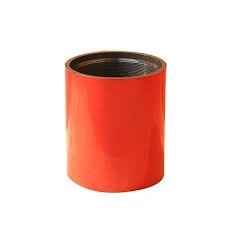- Afrikaans
- Albanian
- Amharic
- Arabic
- Armenian
- Azerbaijani
- Basque
- Belarusian
- Bengali
- Bosnian
- Bulgarian
- Catalan
- Cebuano
- Corsican
- Croatian
- Czech
- Danish
- Dutch
- English
- Esperanto
- Estonian
- Finnish
- French
- Frisian
- Galician
- Georgian
- German
- Greek
- Gujarati
- Haitian Creole
- hausa
- hawaiian
- Hebrew
- Hindi
- Miao
- Hungarian
- Icelandic
- igbo
- Indonesian
- irish
- Italian
- Japanese
- Javanese
- Kannada
- kazakh
- Khmer
- Rwandese
- Korean
- Kurdish
- Kyrgyz
- Lao
- Latin
- Latvian
- Lithuanian
- Luxembourgish
- Macedonian
- Malgashi
- Malay
- Malayalam
- Maltese
- Maori
- Marathi
- Mongolian
- Myanmar
- Nepali
- Norwegian
- Norwegian
- Occitan
- Pashto
- Persian
- Polish
- Portuguese
- Punjabi
- Romanian
- Russian
- Samoan
- Scottish Gaelic
- Serbian
- Sesotho
- Shona
- Sindhi
- Sinhala
- Slovak
- Slovenian
- Somali
- Spanish
- Sundanese
- Swahili
- Swedish
- Tagalog
- Tajik
- Tamil
- Tatar
- Telugu
- Thai
- Turkish
- Turkmen
- Ukrainian
- Urdu
- Uighur
- Uzbek
- Vietnamese
- Welsh
- Bantu
- Yiddish
- Yoruba
- Zulu
compression tubing coupler
Understanding Compression Tubing Couplers A Comprehensive Overview
In the realm of plumbing, industrial applications, and various other fields, the importance of reliable and efficient connections cannot be overstated. One such critical component that plays a significant role in these connections is the compression tubing coupler. This article aims to provide a comprehensive overview of compression tubing couplers, exploring their design, applications, benefits, and installation procedures.
What is a Compression Tubing Coupler?
A compression tubing coupler is a fitting designed to connect two pieces of tubing together. It employs a method known as compression fitting, which involves compressing a ferrule against the tubing to create a secure and leak-proof seal. This type of connection is commonly used in various materials, such as copper, plastic, and stainless steel, making it versatile for diverse applications.
Design and Components
Compression couplers typically consist of three main components
1. Nut A threaded component that, when tightened, compresses the ferrule against the tubing. 2. Ferrule A ring-shaped component that grips the tubing tightly, ensuring a leak-proof seal. 3. Body The main section of the coupler that connects the two tubing pieces.
The design of these fittings allows for easy installation and disassembly, making them a convenient choice for many applications.
Applications of Compression Tubing Couplers
Compression tubing couplers are used across a broad range of industries. Some notable applications include
- Water Supply Systems In plumbing, these couplers connect different sections of pipes, ensuring a watertight connection. - HVAC Systems They are crucial in heating, ventilation, and air conditioning systems for connecting refrigerant lines and ensuring proper fluid flow. - Industrial Processes In various manufacturing settings, compression couplers are commonly used to connect different tubing for fluid transfer. - Medical Equipment In medical applications, these couplers are essential for connecting medical gas lines and ensuring the safe transfer of gases.
Benefits of Using Compression Tubing Couplers
1. Ease of Installation Compression fittings can be installed without the need for specialized tools. This makes them an accessible option for both professional plumbers and DIY enthusiasts. 2. Versatility Compression couplers can be used with various materials, including metal and plastic tubing, allowing for flexibility in applications.
compression tubing coupler

3. Reusability Unlike some permanent fittings, compression couplers can be disassembled and reused, which is a cost-effective feature for ongoing projects or repairs.
4. Leak-Proof Design When installed correctly, compression fittings provide a secure and reliable seal that minimizes the risk of leaks.
5. Resistance to Vibration Compression fittings are often more resistant to vibrations and thermal expansion, making them suitable for dynamic applications.
Installation Procedure
Installing a compression tubing coupler is a straightforward process
1. Preparation Ensure that the tubing ends are cut cleanly and are free from burrs. Clean the surfaces for optimal sealing.
2. Assemble the Fitting Slide the nut onto one end of the tubing, followed by the ferrule.
3. Insert the Tubing Insert the tubing into the body of the coupler until it reaches the end.
4. Tighten the Nut Carefully tighten the nut onto the coupler body. Use a wrench to ensure a snug fit, but avoid overtightening, which can damage the tubing.
5. Check for Leaks After installation, it is essential to test the connection for leaks, especially in high-pressure applications.
Conclusion
Compression tubing couplers are invaluable components in a wide array of applications, ensuring reliable connections in plumbing, HVAC, industrial processes, and more. Their ease of installation, versatility, and leak-proof design make them a preferred choice for professionals and DIYers alike. Understanding the nuances of these fittings not only helps in making informed decisions but also ensures the longevity and reliability of any system where they are employed. With ongoing advancements in material technology and design, the future of compression tubing couplers looks promising, paving the way for enhanced efficiency and performance in various fields.
-
Tubing Pup Joints: Essential Components for Oil and Gas OperationsNewsJul.10,2025
-
Pup Joints: Essential Components for Reliable Drilling OperationsNewsJul.10,2025
-
Pipe Couplings: Connecting Your World EfficientlyNewsJul.10,2025
-
Mastering Oilfield Operations with Quality Tubing and CasingNewsJul.10,2025
-
High-Quality Casing Couplings for Every NeedNewsJul.10,2025
-
Boost Your Drilling Efficiency with Premium Crossover Tools & Seating NipplesNewsJul.10,2025







